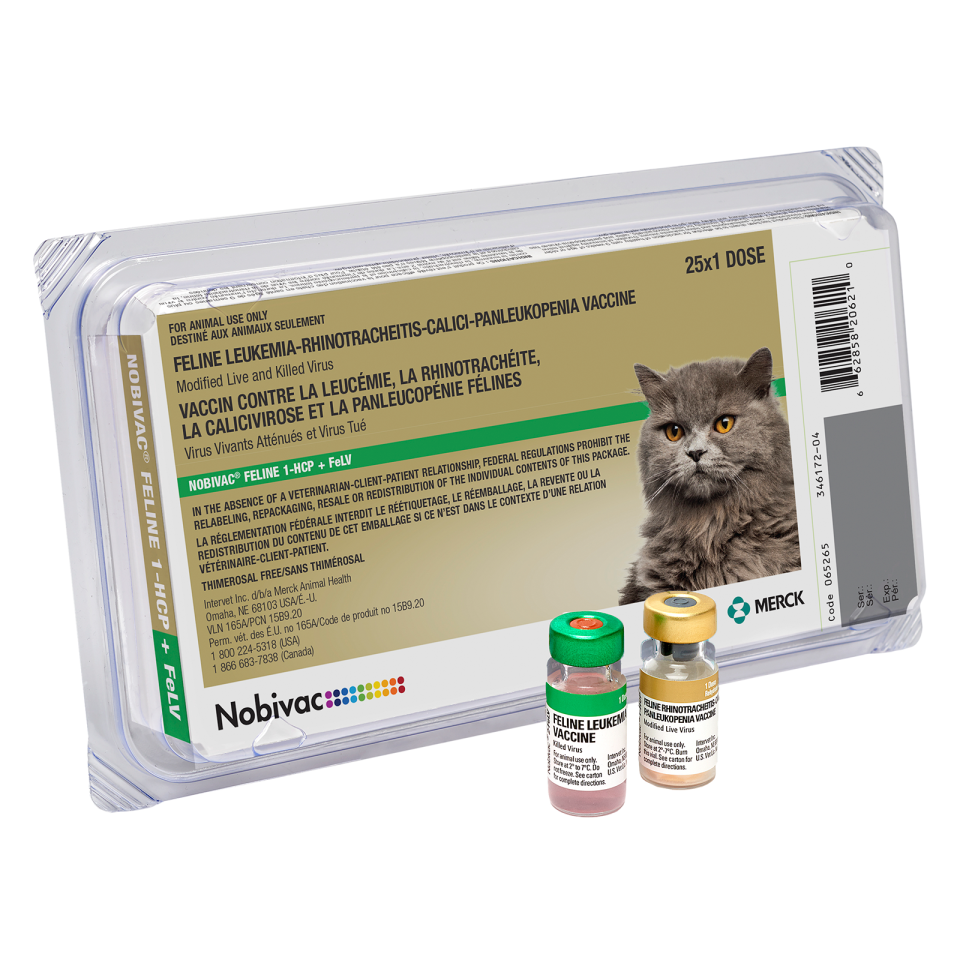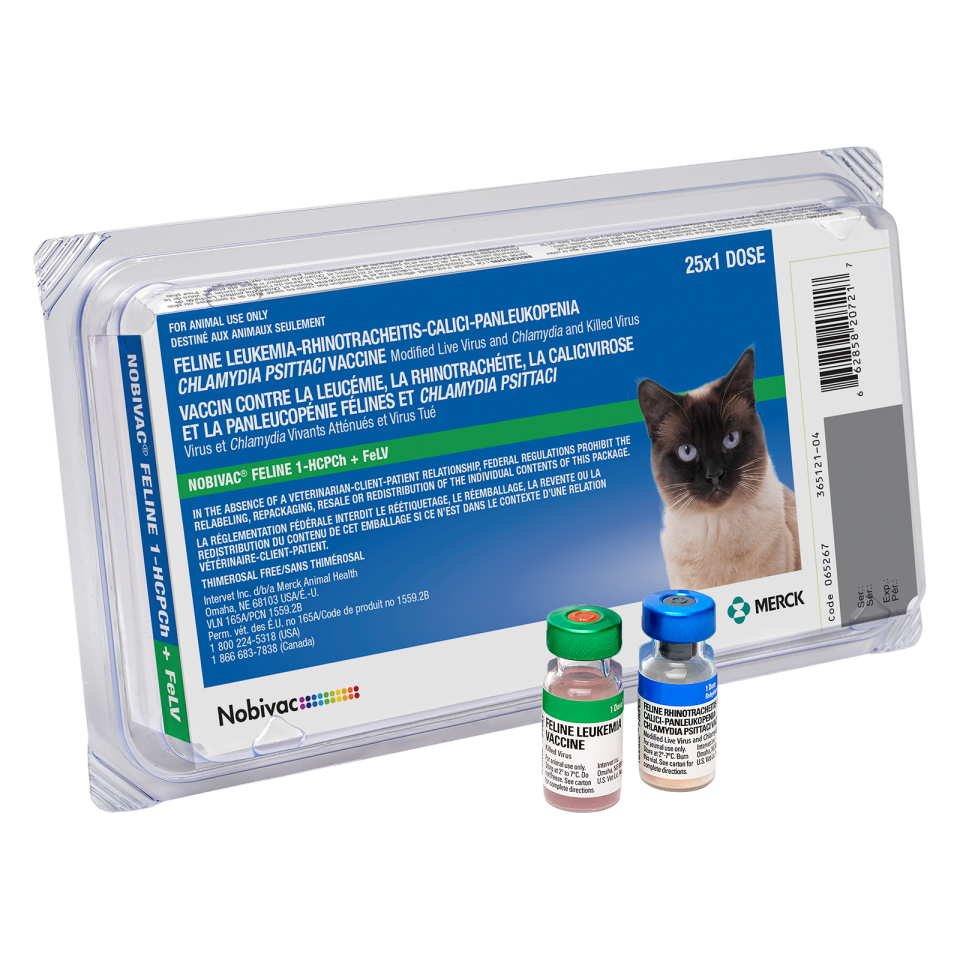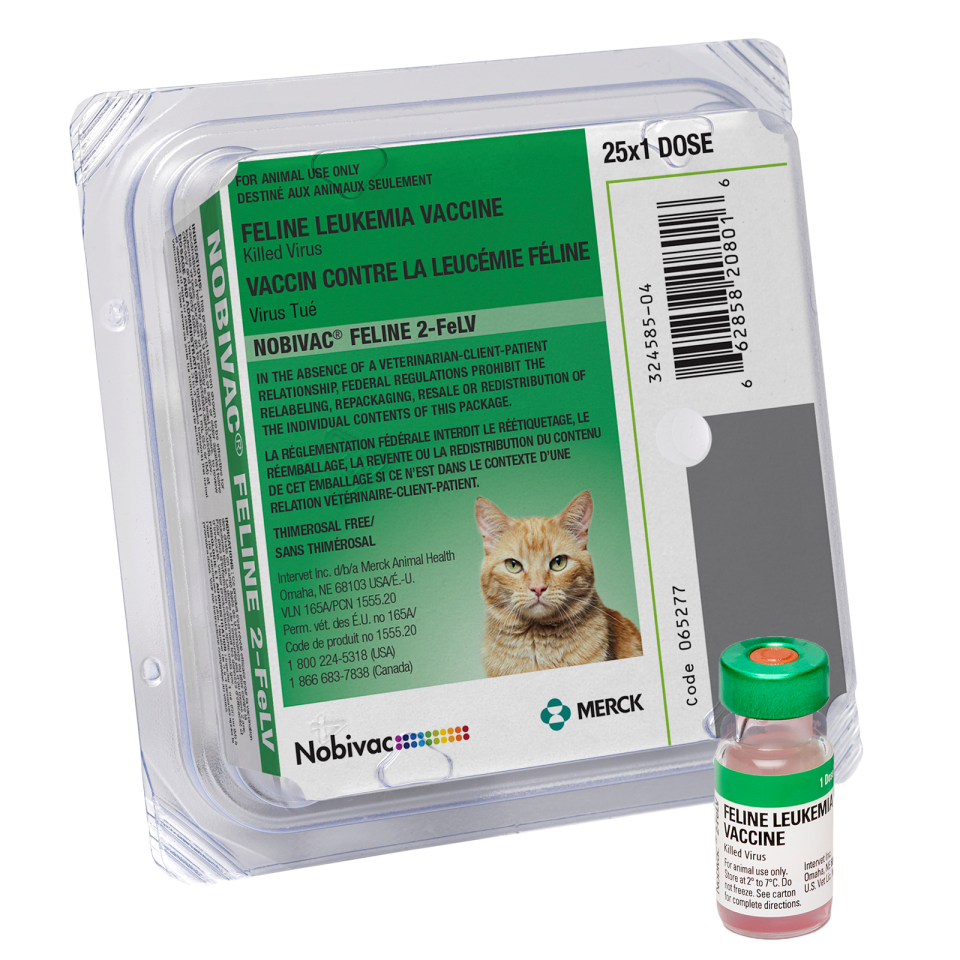
Feline Leukemia

Disease Overview
Feline leukemia virus (FeLV) is a retrovirus that replicates within many tissues, including bone marrow, salivary glands, and respiratory epithelium.22, 23
The percentage of cats infected varies depending on age, health, environment, and lifestyle.22
Merck Animal Health Solutions
Transmission
Social behavior such as mutual grooming and sharing food or water dishes is the most common means of transmission.23
FeLV in saliva, nasal secretions, urine, feces, and blood is transmitted to healthy cats during intimate contact with infected cats. Kittens can acquire the virus from infected mothers while still in the womb or through nursing.
Clinical Signs29
- Fever
- Loss of appetite
- Weight loss
- Diarrhea
- Swollen lymph nodes
- Pale or inflamed gums
Risk Factors
- Boards often or comes from a shelter environment
- Lives in a multiple cat household
- Is a rescue cat or from a feral cat population
- Kittens are at higher risk of infection than adult cats22
- Sharing food and water bowls, and common litter areas22
- Outdoor cats are at higher risk
References:
22. Cornell University College of Veterinary Medicine; American Association of Feline Practitioners. Feline leukemia virus.
Available at: http://www.vet.cornell.edu/fhc/brochures/felv.html. Accessed December 29, 2011.
23. Hartmann K. Feline leukemia virus infection. In: Greene CE, ed. Infectious Diseases of the Dog and Cat. 3rd ed. St. Louis, MO: Saunders/Elsevier; 2006:105-108.



